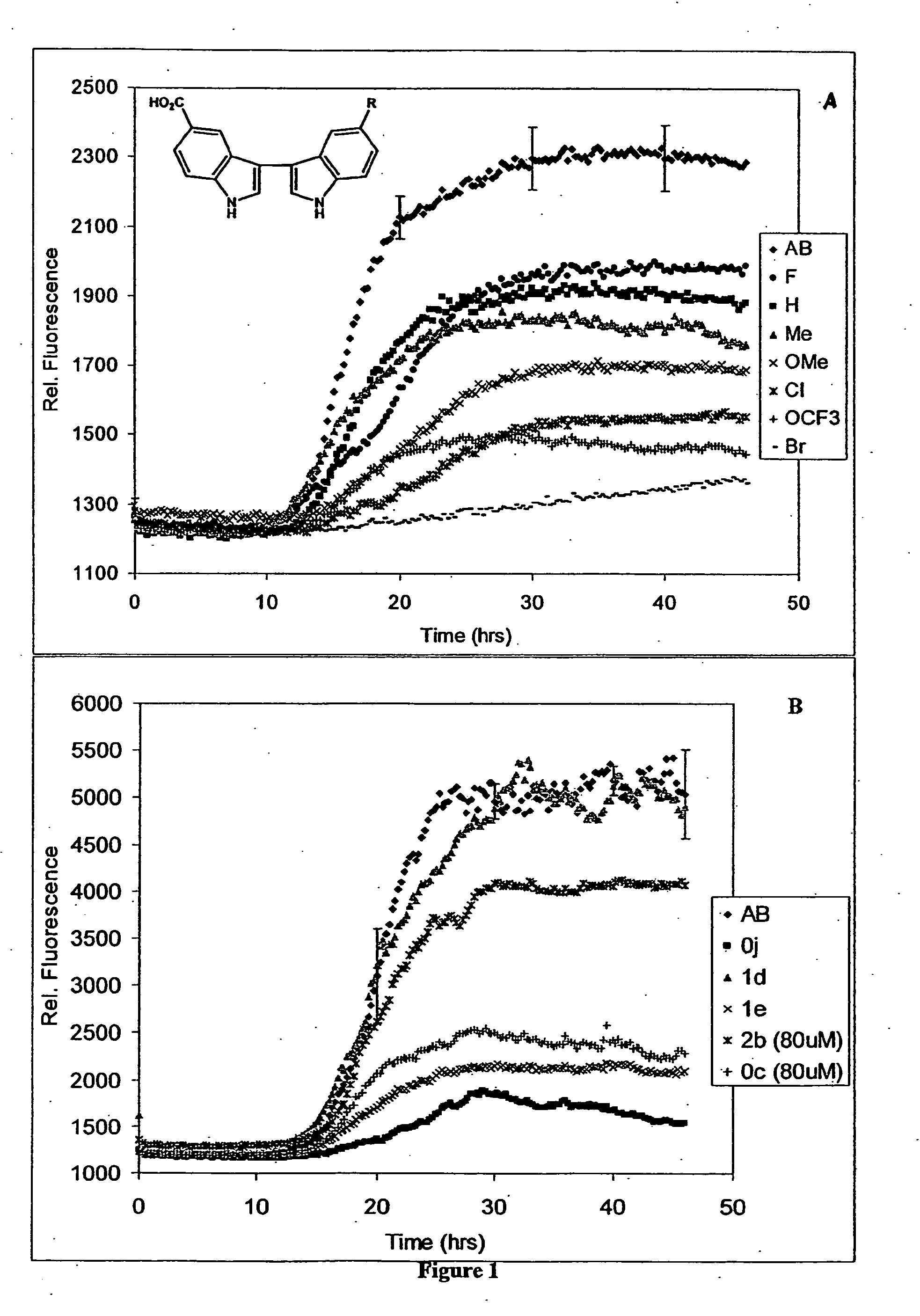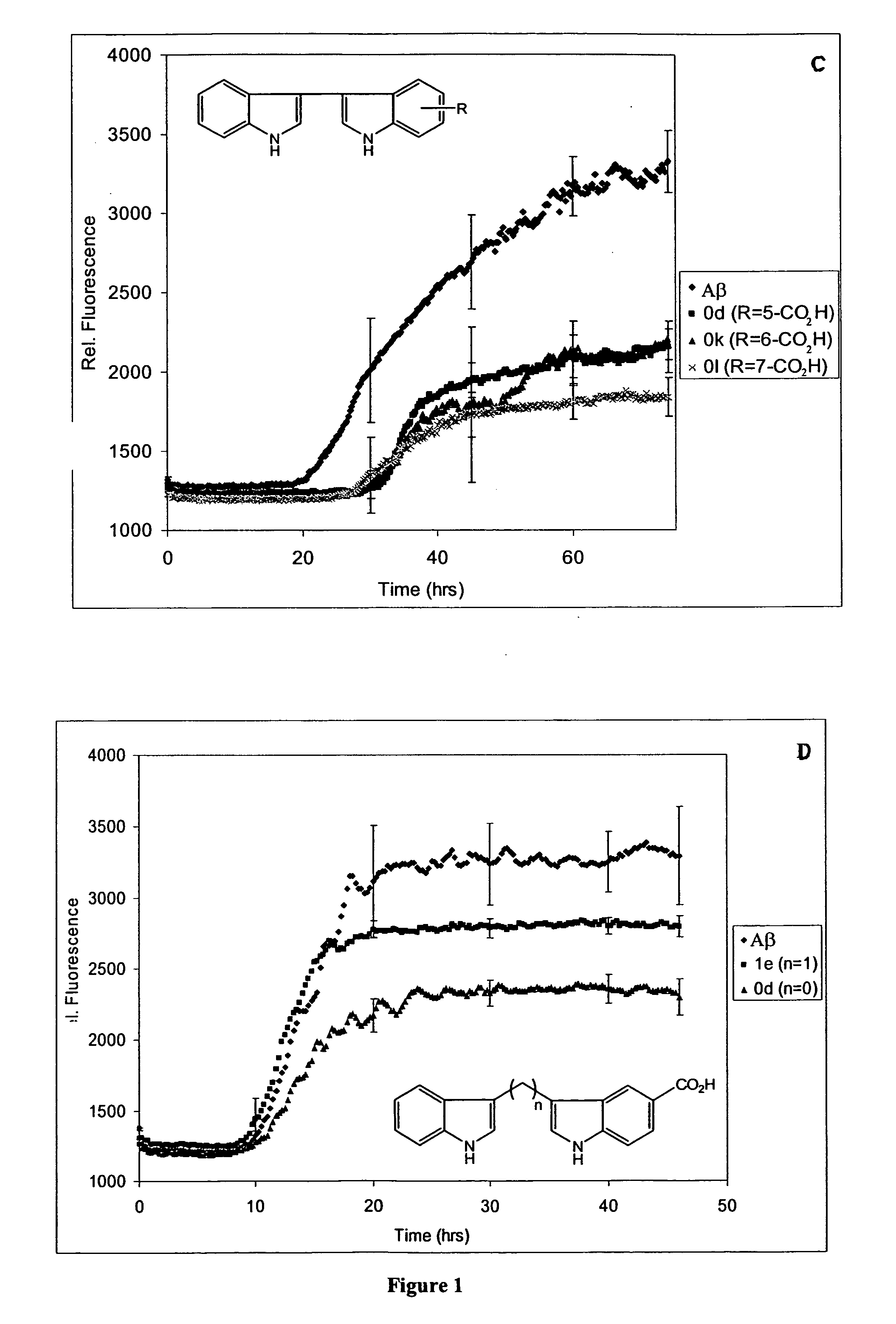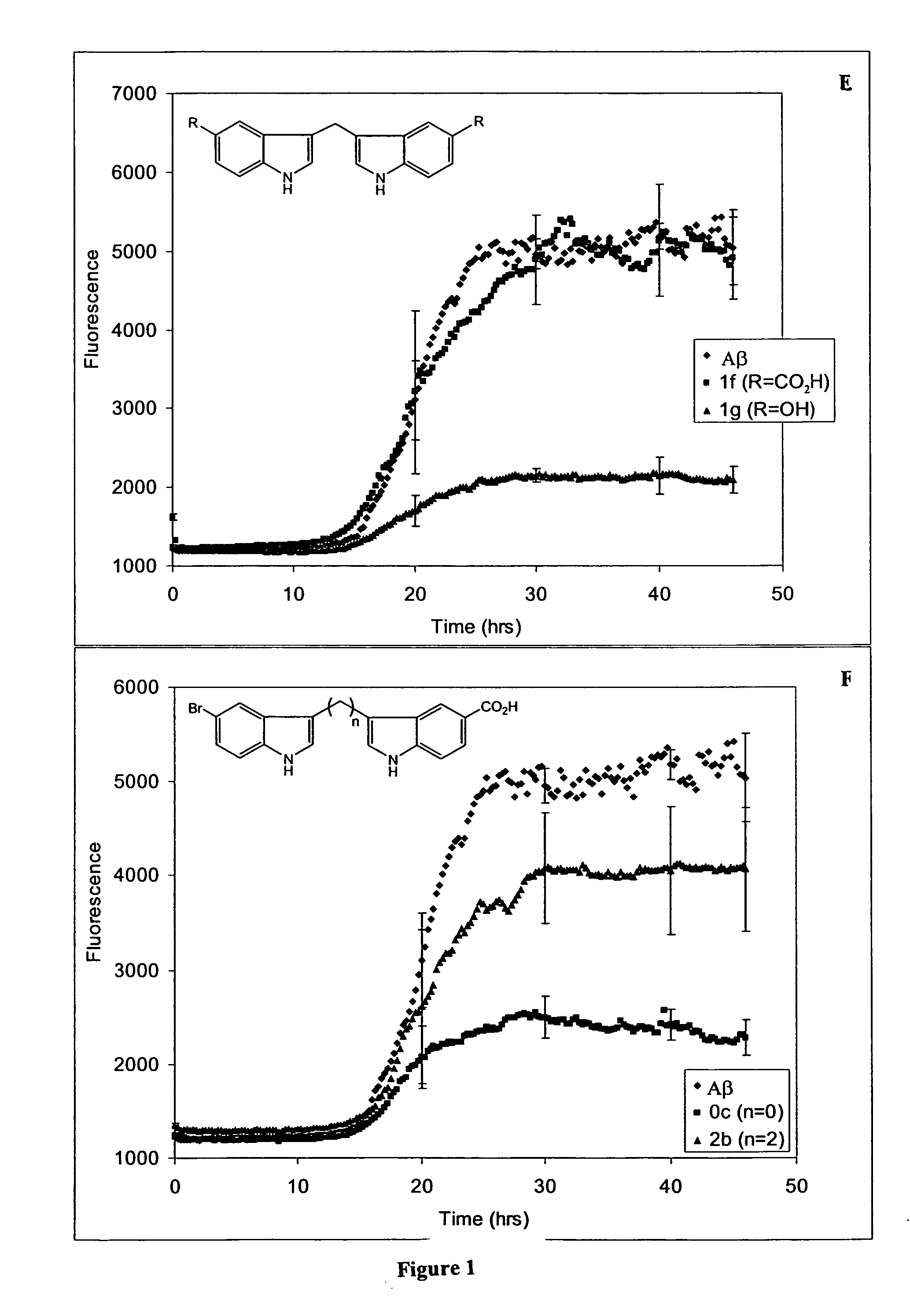Treatment of protein folding disorders
a protein folding disorder and protein technology, applied in the field of protein folding disorders, can solve the problems of increasing mental and physical incapacity, institutionalization and death, and inevitably following the onset of the disease, and achieve the effect of strengthening the design possibilities of promiscuous drug therapeutics
- Summary
- Abstract
- Description
- Claims
- Application Information
AI Technical Summary
Benefits of technology
Problems solved by technology
Method used
Image
Examples
example 1
Synthesis of Directly Linked Bis-Indoles
[0414] Directly linked bis-indoles were synthesized according to the procedure set forth in Scheme 1 below:
Scheme 1, Synthesis of 3,3′-bis-indolyl compounds
(i) Coupling of Indole and Isatin (9a, c-1)
[0415] Following the procedure of Bergman (J. Acta. Chem. Scand., 1971, 4: 1277-80) a solution of isatin (5-20 mmol) and indole (1 eq.), either or both substituted at the 5, 6 or 7 position as appropriate (Scheme 1), and piperidine (0.1 eq.) were stirred in ethanol at 45° C. for one hour and then at room temperature. When TLC indicated the reaction was complete (8-24 hrs.), the reaction mixture was filtered in cases where a small amount of solid was present, and the product purified by recrystallization from EtOH / H2O (9a,d,f,j), THF / EtOH / H2O (9g,h), or EtOAc / hexanes (9i). For 9c and 9e, purification was achieved by removing the solvent from the reaction mixture, resuspending the yellow solid in EtOH (50 mL), sonicating for 2 hrs. to dissolve im...
example 1a
(v) Cleavage of Methoxyl Groups to Hydroxyl Groups (0m)
[0454]
3-(5-hydroxy-indol-3-yl)-indol-5-ol (0m)
[0455] The product 0m was obtained by stirring 0b (0.923 g, 3.16 mmol) in dichloromethane (20 mL) at −78° C., to which was added BBr3 (3 mL, 10 eq.). The dark red solution was allowed to slowly warm to room temperature and stirred for 20 h. The reaction mixture was then cooled to 0° C., water added (10 mL), and the pH raised to about 7 by adding 1N NaOH. The aqueous layer was extracted with EtOAc (2×50 mL) and the organic phase dried and concentrated, affording crude product. The product was purified by flash column chromatography, using 1:1 hexanes:EtOAc with 5% MeOH as the eluent. Yellow-green solid (0.546 g, 65%); mp 235° C. (dec.); 1H NMR δ: 6.64 (dd, 2H, J=8.6, J=2.3), 7.03 (d, 2H, J=8.3), 7.21 (d, 2H, J=8.6), 7.36 (d, 2H, J=8.4), 8.57 (s, 2H), 10.76 (d, 2H, J=1.5); 13C NMR δ: 103.99, 109.69, 111.84, 112.17, 122.38, 127.30, 131.29, 150.96.
example 2
Synthesis of One Carbon-Linked Bis-Indoles
[0456] The one carbon-linked bis-indoles (1a-g) were synthesized from indole or 5-substituted indole and formaldehyde, using the method of Jackson et al. (J. Chem. Soc. Perkin Trans. I, 1987, 11: 2543-51 (Scheme 4).
Scheme 4 Synthesis of 1C bis-indoles. 1a and 1b producedas a mixture, as were 1c and 1d.RR′H—OCH3—CO2HHCO2H—OH—
[0457] Formaldahyde (0.55 eq., 37% aqueous solution) and acetic acid (0.5 eq.) were added to indole or substituted indole (1.0-100 mmol) suspended in H2O and the suspension heated at 90° C. for 8-20 hrs. (Scheme 4). Since 5-hydroxy-indole is sensitive to oxidation, the synthesis of 1 g was performed under argon and excluding light, and was heated at only 50° C. for 3 hrs. For the reaction giving 1a,b, as well as that for 1c,d, the beige, gummy mixture was collected by vacuum filtration, washed with water, recrystallized from EtOAc / hexanes and the resulting cream solid purified by flash chromatography using 4:1 hexanes / ...
PUM
| Property | Measurement | Unit |
|---|---|---|
| temperature | aaaaa | aaaaa |
| pH | aaaaa | aaaaa |
| temperature | aaaaa | aaaaa |
Abstract
Description
Claims
Application Information
 Login to View More
Login to View More - R&D
- Intellectual Property
- Life Sciences
- Materials
- Tech Scout
- Unparalleled Data Quality
- Higher Quality Content
- 60% Fewer Hallucinations
Browse by: Latest US Patents, China's latest patents, Technical Efficacy Thesaurus, Application Domain, Technology Topic, Popular Technical Reports.
© 2025 PatSnap. All rights reserved.Legal|Privacy policy|Modern Slavery Act Transparency Statement|Sitemap|About US| Contact US: help@patsnap.com



